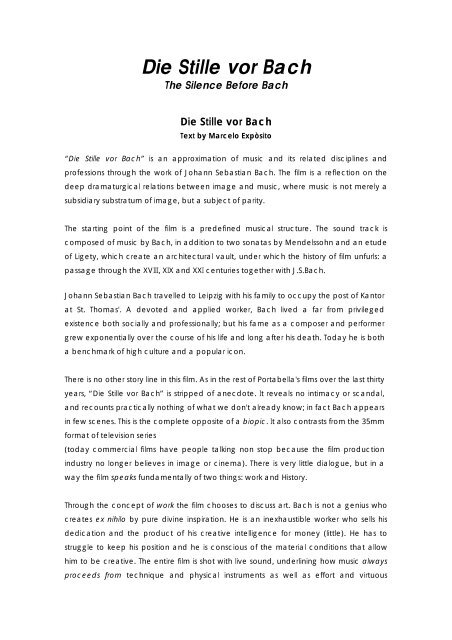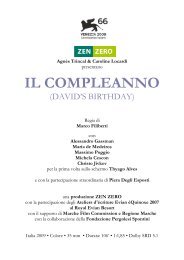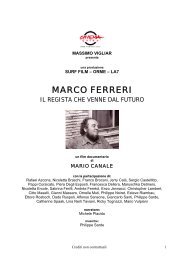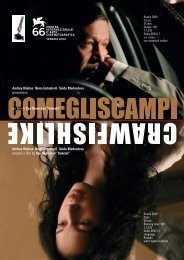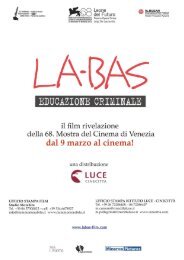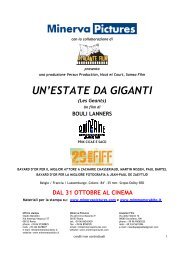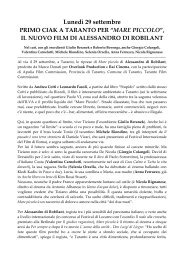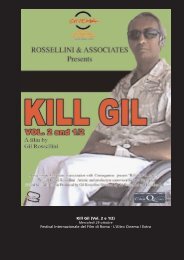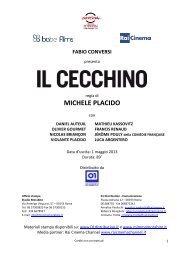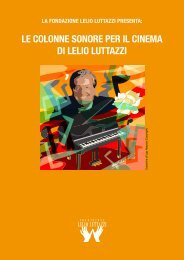Die Stille vor Bach - Studio Morabito
Die Stille vor Bach - Studio Morabito
Die Stille vor Bach - Studio Morabito
Create successful ePaper yourself
Turn your PDF publications into a flip-book with our unique Google optimized e-Paper software.
<strong>Die</strong> <strong>Stille</strong> <strong>vor</strong> <strong>Bach</strong><br />
The Silence Before <strong>Bach</strong><br />
<strong>Die</strong> <strong>Stille</strong> <strong>vor</strong> <strong>Bach</strong><br />
Text by Marcelo Expòsito<br />
“<strong>Die</strong> <strong>Stille</strong> <strong>vor</strong> <strong>Bach</strong>” is an approximation of music and its related disciplines and<br />
professions through the work of Johann Sebastian <strong>Bach</strong>. The film is a reflection on the<br />
deep dramaturgical relations between image and music, where music is not merely a<br />
subsidiary substratum of image, but a subject of parity.<br />
The starting point of the film is a predefined musical structure. The sound track is<br />
composed of music by <strong>Bach</strong>, in addition to two sonatas by Mendelssohn and an etude<br />
of Ligety, which create an architectural vault, under which the history of film unfurls: a<br />
passage through the XVIII, XIX and XXI centuries together with J.S.<strong>Bach</strong>.<br />
Johann Sebastian <strong>Bach</strong> travelled to Leipzig with his family to occupy the post of Kantor<br />
at St. Thomas'. A devoted and applied worker, <strong>Bach</strong> lived a far from privileged<br />
existence both socially and professionally; but his fame as a composer and performer<br />
grew exponentially over the course of his life and long after his death. Today he is both<br />
a benchmark of high culture and a popular icon.<br />
There is no other story line in this film. As in the rest of Portabella's films over the last thirty<br />
years, “<strong>Die</strong> <strong>Stille</strong> <strong>vor</strong> <strong>Bach</strong>” is stripped of anecdote. It reveals no intimacy or scandal,<br />
and recounts practically nothing of what we don't already know; in fact <strong>Bach</strong> appears<br />
in few scenes. This is the complete opposite of a biopic. It also contrasts from the 35mm<br />
format of television series<br />
(today commercial films have people talking non stop because the film production<br />
industry no longer believes in image or cinema). There is very little dialogue, but in a<br />
way the film speaks fundamentally of two things: work and History.<br />
Through the concept of work the film chooses to discuss art. <strong>Bach</strong> is not a genius who<br />
creates ex nihilo by pure divine inspiration. He is an inexhaustible worker who sells his<br />
dedication and the product of his creative intelligence for money (little). He has to<br />
struggle to keep his position and he is conscious of the material conditions that allow<br />
him to be creative. The entire film is shot with live sound, underlining how music always<br />
proceeds from technique and physical instruments as well as effort and virtuous


